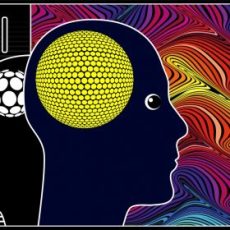Nandita Kochar
Ancient Greek Philosophers constantly worked towards changing our perspective of the world by constantly trying to make sense of how the world worked. One of such philosophers was Plato. He worked on everything from mathematics to ethics to religion. But one of his most notable work was the Theory of Forms.
The Theory of Forms states that there are two kinds of realms: the physical realm and the spiritual realm. The physical realm is the material stuff with which we interact on a daily basis. This realm is constantly changing and imperfect in nature. The spiritual realm exists beyond the physical realm and Plato calls spiritual realm as the Realm of Forms (or Realm of Ideas or Realm of Ideals).
Plato asserts that the physical realm is only a shadow or an image of the true reality that exists in the Realm of Forms. These forms are abstract, perfect, unchanging concepts or ideals that transcend time and space and exist in the spiritual realm. Even though the forms are abstract, they are real. In fact he believes them to be more real than what exists in the physical world. Happy Ho organizes best Meditation and Tarot classes in Noida and Delhi NCR area in India.
Let me explain you Plato’s theory with a simple example. Imagine I am a baker who makes cookies. In order to make a tree shaped cookie, I use a stencil of the same shape. Once I mould the dough using the stencil and put the cookies in the oven, I let them bake. When they are ready, I take them out of the oven and slice out the tree shaped cookies. Now, not all of these cookies will be a perfect replica of the stencil I used. Some will be broken at the bottom, some will not have the leaves on the top.
The mould is my form that exists in the spiritual realm, perfect and unchanging. The cookies will be an image of the form that exist in the physical realm, imperfect and changing.
So concepts like redness, roundness, beauty or justice are forms. And a red ball, a round eraser, a beautiful boy and a just act exist in the physical realm, as a shadow of these forms.





